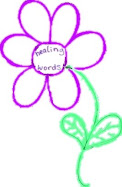The Argan tree (Argania spinosa) grows exclusively in southwestern Morocco, where the local Berber people through the ages have used the tree's incredible resources. The Argan tree is very resistant and thrive in the arid surroundings and reminds in its the form of the olive tree. The Argan tree reaches between 150 to 200 years, surviving heat, drought and poor soil. This thorny tree gets about 8 to 10 meters high, and is often twisted and gnarled, giving goats the opportunity to climb up on the branches where they eat the leaves and fruits. The leaves are small and dark brown, the oval fruits yellow-green and becomes rock hard when they mature. The tree has a huge impact both economically and environmentally in the entire region. Berbers have in ages had the Argan tree as an income source, and today the extraction of oil from the tree's fruit has become a major export industry, which may prove to be crucial for the people's continued positive economic development.
Like the Neem Tree of India, the Argan Tree has become a sort of village pharmacy and it's ancient medicinal properties have been treasured and developed by the Berber people over generations .Argan products have now become part of a very up-market beauty industry and Argan oil is one of the most expensive in the world.
This led to discussion and writing about beauty rituals:
Sonia
Ritual – A Memory
The water, tepid in the pan from the black-leaded range was gently poured into a jug - and so it began. My mind is alive with the memory of my hair-washing treat, wartime style.
The dry powdered shampoo, mixed to a paste, was lovingly spread over blonde hair, worked in and through and rinsed, and rinsed again. This last with a dash of malt vinegar to bring out the shine, or with collected rainwater to soften. The hair was allowed to dry naturally; the term split ends was not invented – scissors trimmed any fly-away strands.
Then the unrushed brushing began: systematic strokes to the beating of hearts, untangled hair plaited, one fat one thin, never quite symmetrically correct, and the warm smile of my mother.
And then my turn to give that love back – brushing her long, beautiful tresses for a while; chatting and knowing this closeness and watching her coil her hair up and pin it easily in place.
I grew up. My long hair was brushed by others with love and tenderness and I coiled it up too, remembering my father’s words:
Long is the hair of a woman
Long also is her understanding.
Rhian
AFRICA
Alive with rhythm and colour
Forest framework for potential progress
Roots for many, some more modern now
Identity and inheritance
Continuity and conservation
An Amazon of opportunity, of advancement.
We were also captivated by the poem "Goat" by Jo Shapcott- here's a sample:
Goat
Jo Shapcott (b 1953)
Dusk, deserted road, and suddenly
I was a goat. To be truthful it took
two minutes, though it seemed sudden,
for the horns to pop out of my skull,
for the spine to revolutionise and go
horizontal, for the fingers to glue
together and for the nails to become
important enough to upgrade to hoof.
And of course goats are smelly in both the active and passive senses of the word so this led on to:
Annie
salt air
fish
seaweed and crabs
coffee with tia maria melting chocolate
rosemary and lemon balm, balsam and witchazel
new wool
new baby
new puppy
new kitten
new love
roast beef, bacon, bread.







No comments:
Post a Comment